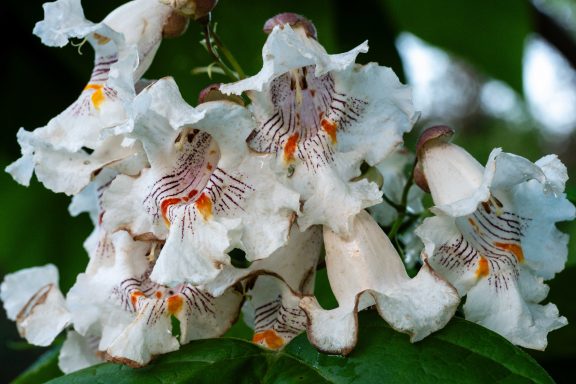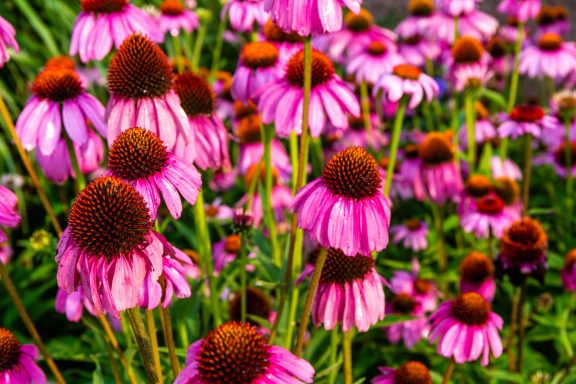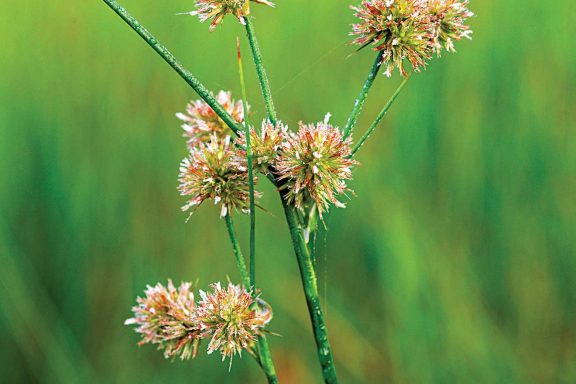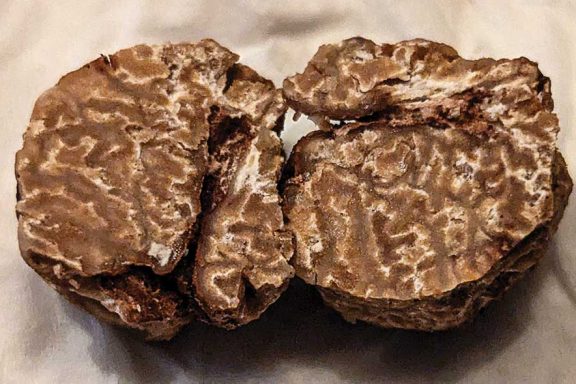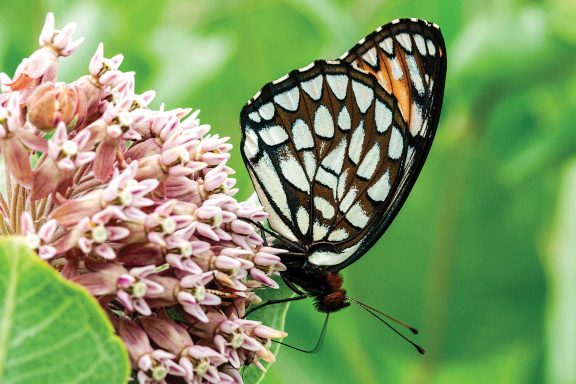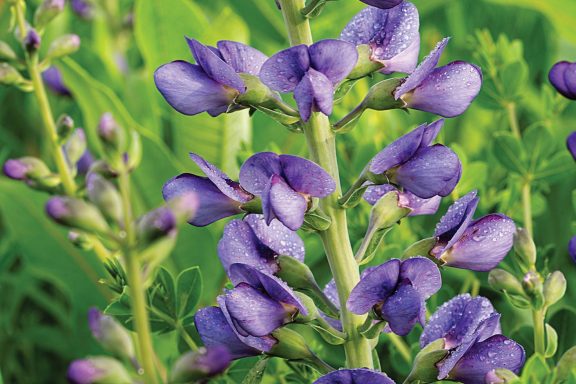The northern catalpa is a tree you likely recognize but may not know by name.
Author: Gerry Steinauer
The Deceptive Coneflowers
In early summer, each coneflower stem develops a single flower head with a ring of pink to rose-red, spreading to drooping petals.
Native Rush Seeds Reborn
When buried in sediment and shielded from the elements, tiny, nearly microscopic rush seeds can remain viable for decades.
Newly Discovered Mushrooms
This past June, I spent a week collecting mushrooms with Northern Prairies Land Trust ecologist Chance Brueggemann and mycologist Derek Zeller.
A Passion for Regal Fritillaries and Violets
The regal fritillary is aptly named. A glimpse of this large butterfly, with its beautiful reddish-orange wings ornately spotted with white, black and blue, effortlessly sailing above the prairie, is indeed a regal sight.
Wild Indigos – Exceptional Native Ornamentals
Ask any horticulturalist what wildflowers make good ornamentals, and wild indigos are usually near the top of their list.

